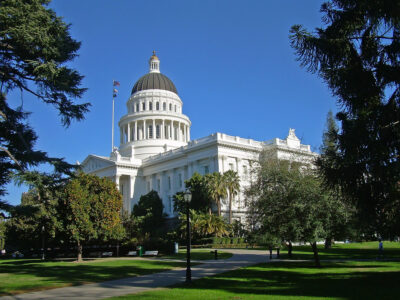CEQA
Thoughts on AB 131
Overall a good bill, but the definition of natural and protected lands is inadequate
Governor Newsom is pushing for CEQA reform as part of approval of the state budget, and the result is two budget trailer bills, AB 130 and AB 131, that together provide some of the most significant changes to CEQA in many years. Overall, these are good bills. The changes are focused on facilitating development where …
Continue reading “Thoughts on AB 131”
CONTINUE READINGHow To Botch A CEQA Analysis
LA Metro’s draft EIR for the crucial Sepulveda Transit Corridor is thorough and careful, but it misses a key point: heavy rail is environmentally superior.
If you are from Los Angeles, you will get this. Q: What’s the best thing about the 405? A: Free parking. The 405 is the highway that runs down the west side of metropolitan Los Angeles, connecting the San Fernando Valley to west Los Angeles, down through the South Bay and into Orange County. Even …
Continue reading “How To Botch A CEQA Analysis”
CONTINUE READINGClimate Lawsuits Now a Matter of Life and Death
The Drain is a weekly roundup of environmental and climate news from Legal Planet.
What a week for watchers of climate litigation. Big new filings, claims of death and destruction, a landmark ruling, and a juicy hearing all in the span of 36 hours. First, there was what the New York Times described as “the first wrongful death lawsuit” to be brought against oil and gas companies over claims …
Continue reading “Climate Lawsuits Now a Matter of Life and Death”
CONTINUE READINGThe CEQA Poison Pill In SB 607
Weakening the statewide standard of review benefits polluting facilities
For California to meet its climate goals and bring down prices on basic needs like housing, transportation and energy, it will need to dramatically increase infill housing, transit and clean energy facilities, among other projects. Part of achieving that goal involves reforming how environmental review under the California Environmental Quality Act (CEQA) can counter-productively slow …
Continue reading “The CEQA Poison Pill In SB 607”
CONTINUE READINGAnother CEQA urban residential exemption bill
AB 609 provides a different and promising approach for advancing urban infill, but it could use a map
Following up on my recent post about SB 607, which proposes creating a California Environmental Quality Act (CEQA) exemption for urban infill housing, a similar bill, AB 609, has also been introduced this session. Like SB 607, AB 609 exempts from CEQA housing projects in urban areas. The main difference with respect to the infill …
Continue reading “Another CEQA urban residential exemption bill”
CONTINUE READINGThe Death of CEQA?
Not quite, but Assemblymember Wicks’ new bill would severely limit CEQA for housing.
“Legislative bombthrower” is one of those cliched – and thus overused – metaphors. And California State Assemblymember Buffy Wicks (D-Richmond) has no reputation as one. But with her latest effort, AB 609, it seems like she is enjoying her Molotov cocktail shaken, not stirred. Wicks’ bill – now cosponsored with several other Assemblymembers – is …
Continue reading “The Death of CEQA?”
CONTINUE READINGCEQA and infill development
SB 607 is an excellent beginning for reforming CEQA to facilitate residential infill development
The state legislature continues its efforts to facilitate more housing production in California. Among the most significant bills being considered this session in Sacramento is SB 607, which would provide some substantial changes to how environmental review under the California Environmental Quality Act (CEQA) would operate. Overall, this is a bill that would provide important …
Continue reading “CEQA and infill development”
CONTINUE READINGBanking and Exchange Programs to Mitigate Vehicle Miles Traveled
The 1950s has been called the decade of the American Dream. The United States economy grew by 37 percent, and homeownership surged as suburban houses—equipped with their white picket fences—“sold like hotcakes.” But this American Dream has come at a steep cost. Let’s fast forward to today; more than half a century of government housing …
Continue reading “Banking and Exchange Programs to Mitigate Vehicle Miles Traveled”
CONTINUE READINGHonoring Michael Zischke (1954-2025)
A Force in the CEQA World
Michael Zischke was a talented and award-winning land use and environmental lawyer, Mike was widely recognized for his extensive expertise in California Environmental Quality Act (CEQA) litigation and compliance.
CONTINUE READINGThe Fires in Los Angeles
Wildfire policy and the tragic fires in Southern California?
National attention is (rightly) focused on the terrible fire situation in Los Angeles. At the moment, the top priority is supporting first responders who are trying to control the fires, prevent more damage, and help the people who have lost homes and loved ones. There is (of course) a bunch of chatter on social media …
Continue reading “The Fires in Los Angeles”
CONTINUE READING







